Zeus abducting Europa: Frontispiece for Europa in Atlas Maior
Rare allegorical representation of Europe
Detail
Date of first edition: 1662
Date of this map: 1662 (Latin version), 1664 (Dutch version) or 1659-1672 (Spanish version)
Dimensions (not including margins): 44,5 x 30,5 cm
Dimensions (including margins): 54 x 33,8
Condition: Very good. Clear print on strong paper. Wide margins. Professional repair of small section of right margin, not affecting the view.
Condition rating: A
Map reference: Van der Krogt 2:601
From: Atlas Maior. Van der Krogt 2:33
In stock
Blaeu’s Zeus and Europa
The continent is depicted as Europa, the daughter of the King Agenor of Sidon. When she and her companions were off gathering flowers by the sea, Zeus noticed this charming group, particularly Europe, and appeared to them as a white bull. Europe slid on the bulls back and the bull charged off, plunging into the sea, and began to rapidly swim from the shore. This scene is shown here. In the sky three putti with a banderol inscribed “EUROPA. This picture is engraved by Johannes Visscher. (Van der Krogt)
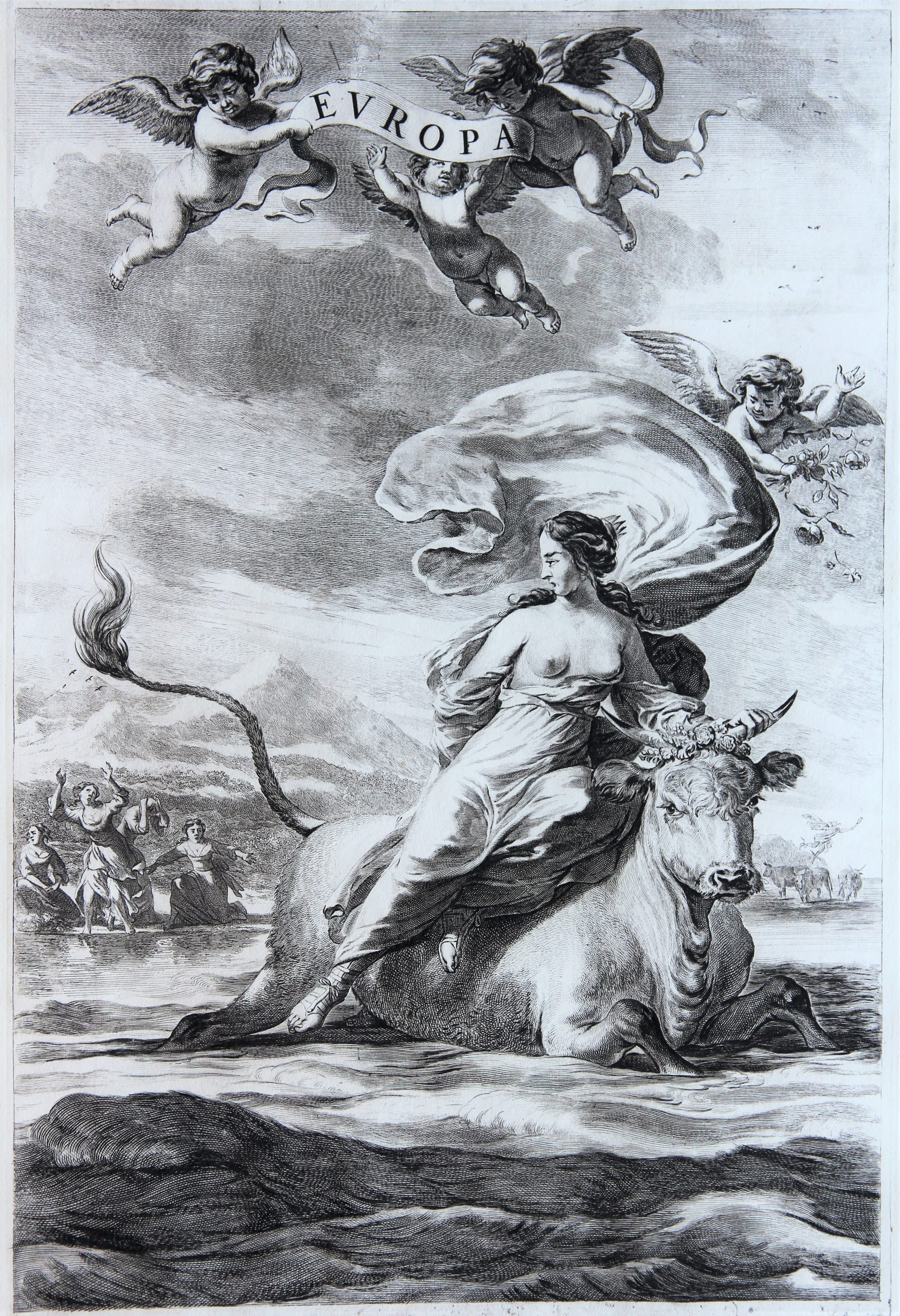
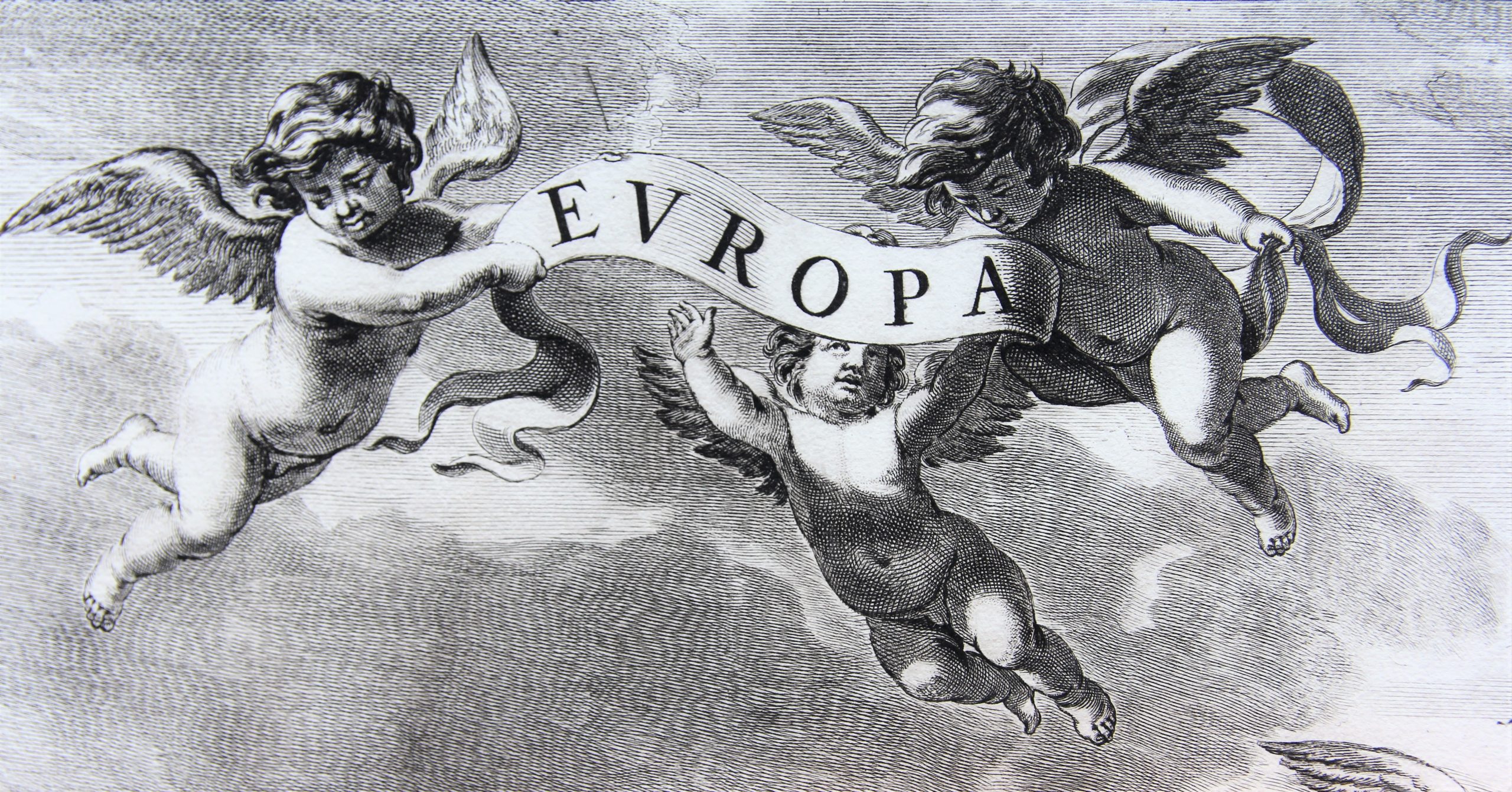
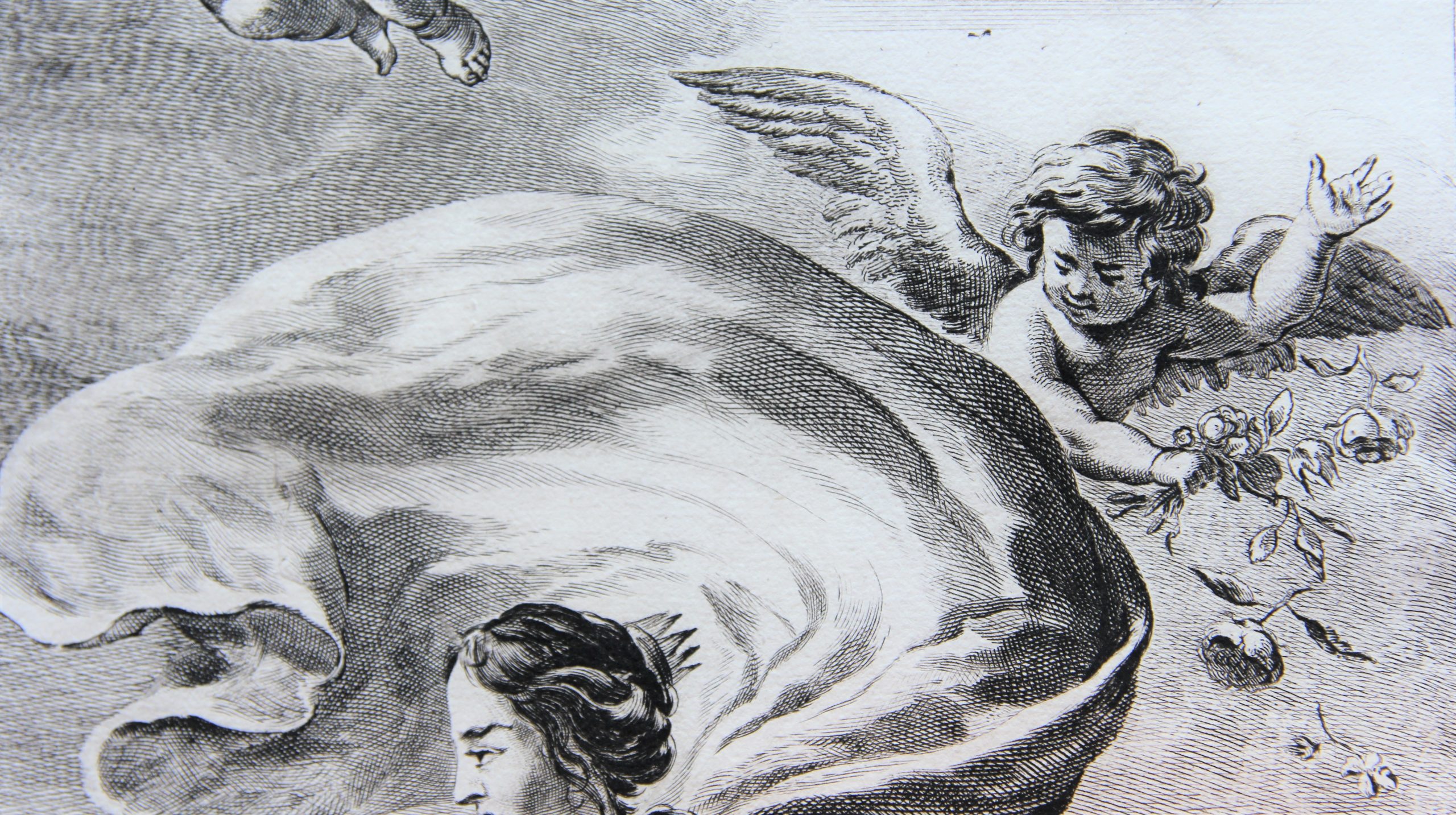
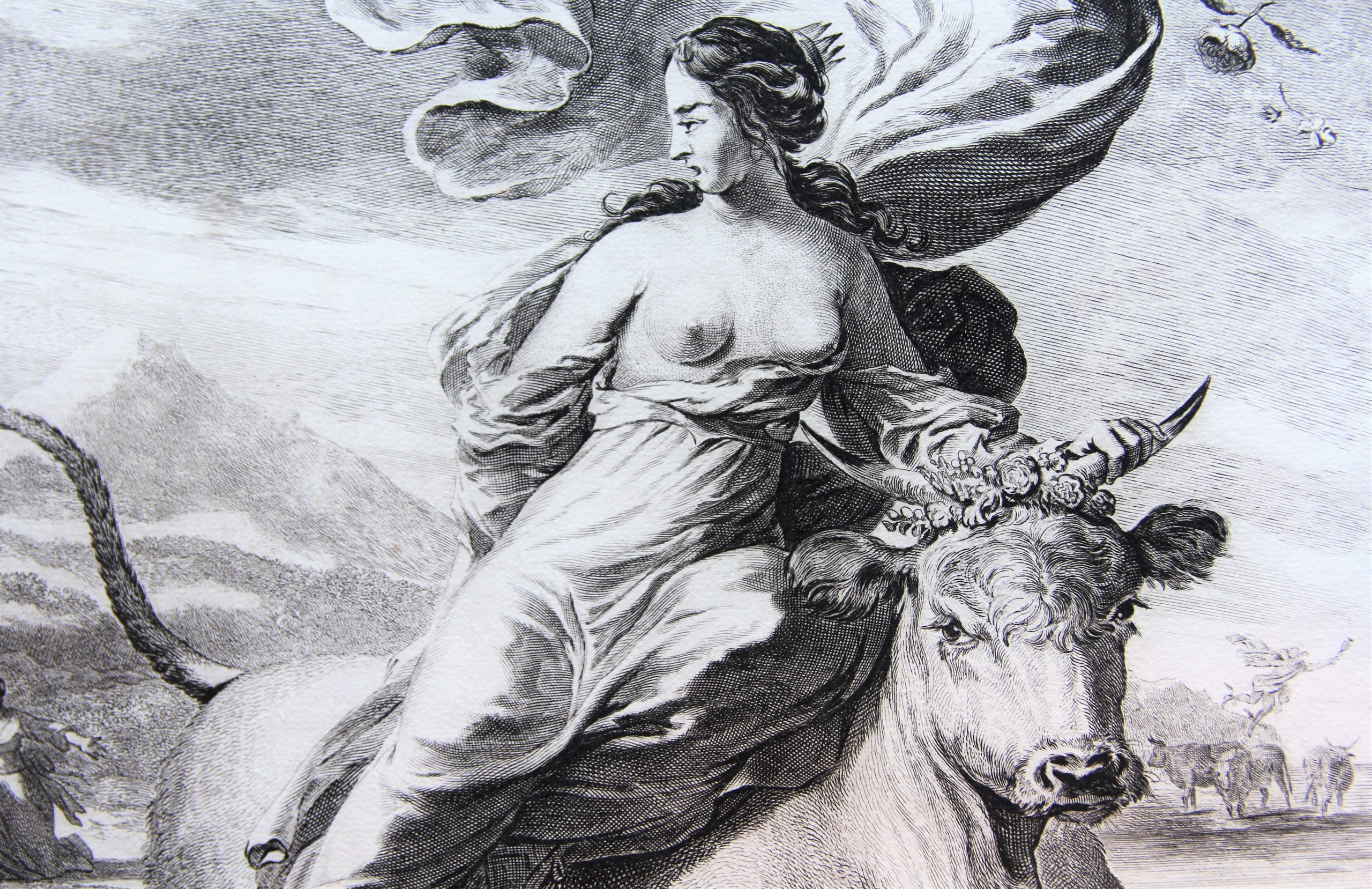
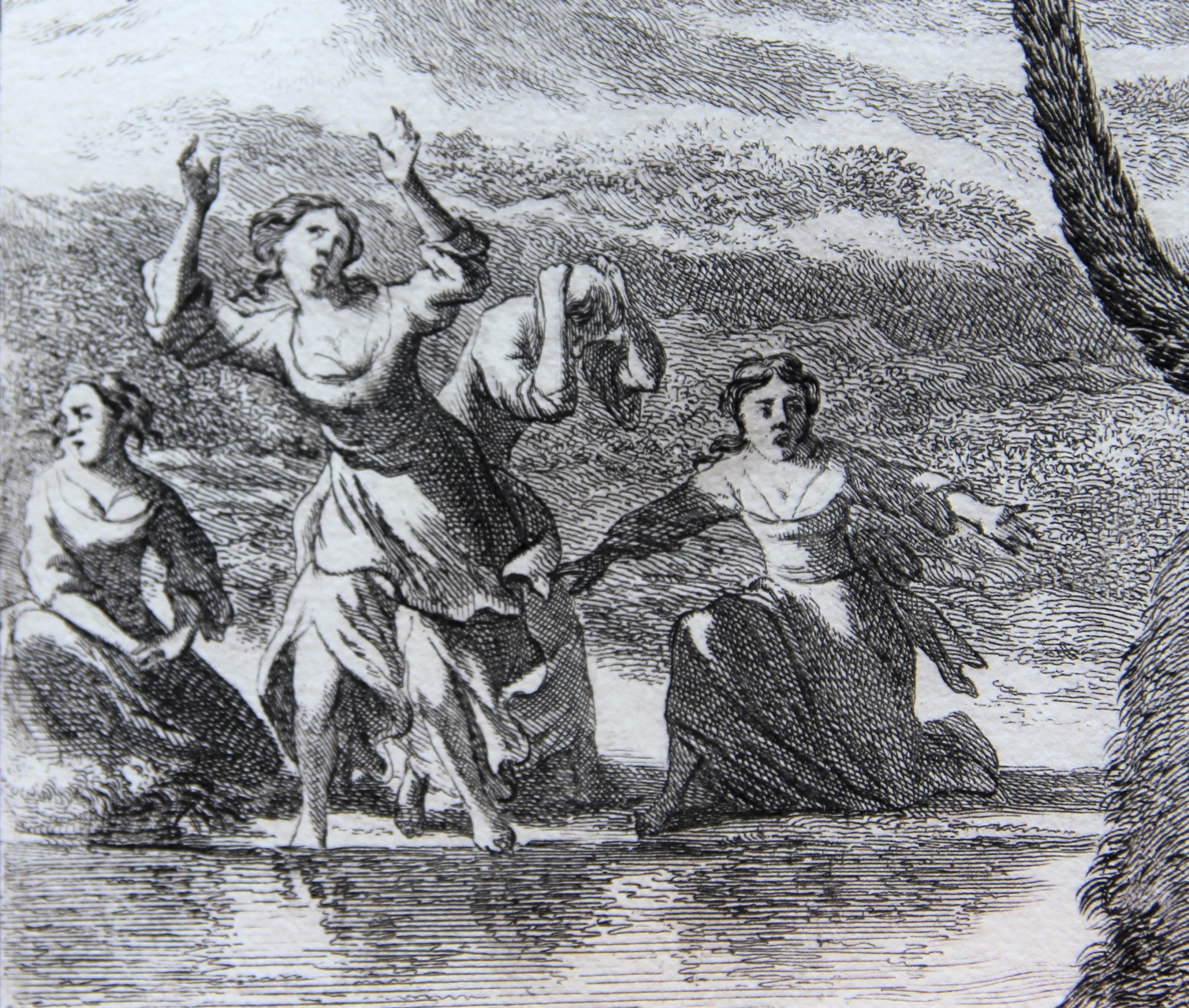
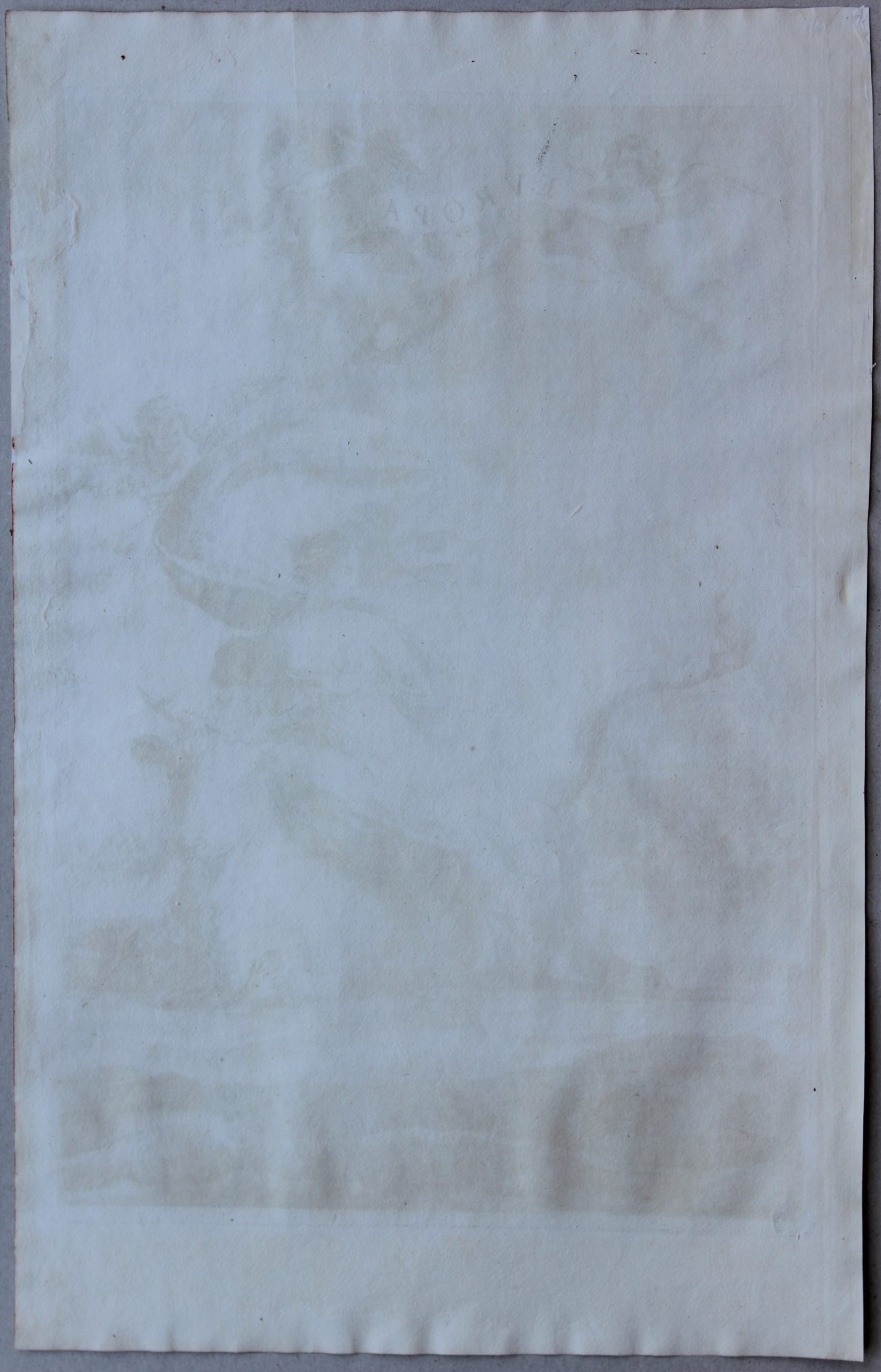
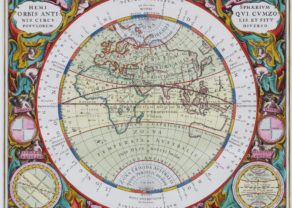
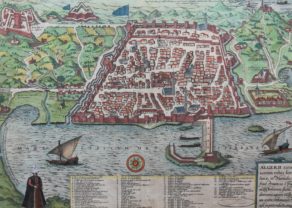
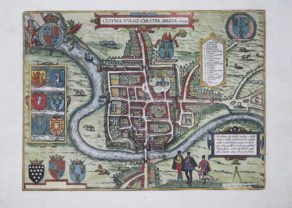
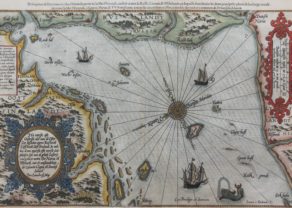
Zeus and Europa: a well known myth
Once upon a time… it was a beautiful day and Europa and her companions went off gathering flowers by the sea. Greek Zeus (or Roman Jupiter) noticed this charming group, particularly Europa, who was the prettiest of the maidens. He decided to appear to the group in the form of a white bull, one that was more beautiful than any other; a bull that smelled of flowers. He abducted her… Or did Eros induce him into action with one of his arrows? Whatever the truth may be… They went off and got three children among whom was Minos, future king of Crete.
Greek mythology and geography identifies lands and rivers with female figures. Thus, Europa was first named in a geographic context in the Homeric Hymn to Delian Apollo (Illiad, 8th century BC), in reference to the western shore of the Aegean Sea. As a name for a larger part of the known world, it was first used in the 6th century BC by Anaximander and Hecataeus.
The myth (also known from Ovid’s Metamorphoses) became quite popular in the art of painting (see Titian or Rembrandt below). In cartography, Blaeu used this image as introduction for his section on the continent of Europe. This engraving (along with a few other mythological scenes) only appeared in a few versions of the atlas, mainly the Latin text books; as the Latin edition was aimed at an intellectual clientele.